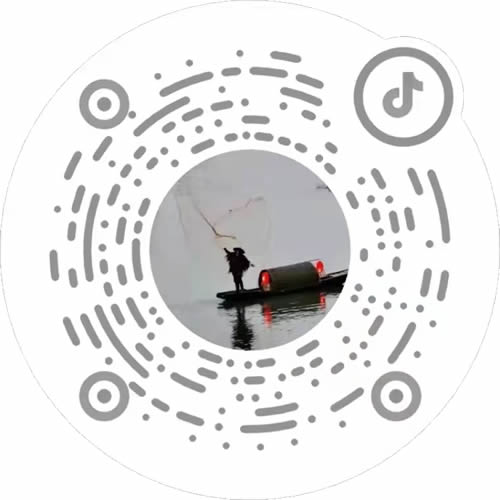英语反意疑问句和it用法及其相关句型:doc全文下载 href="/Upload/UploadFiles//coach_UploadFiles_8112/201311/2013112710385135.doc">高中英语反意疑问句和it用法及其相关句型:doc全文下载
反意问句
1 含情态动词的反意问句
1) 含有ought to 的反意疑问句,疑问部分用shouldn't / oughtn't +主语。
He ought to know what to do, oughtn't he? / shouldn't he?
2) 陈述部分有have to +v. (had to + v.),疑问部分常用don't/didn,t +主语
We have to get there at eight tomorrow, don't we?
3) 陈述部分的谓语是used to 时,疑问部分用didn't +主语或 usedn't +主语。
He used to take pictures there, didn't he? / usedn't he?
4) 陈述部分有had better + v. 疑问句部分用hadn't you?
You'd better read it by yourself, hadn't you?
5) 陈述部分有would rather +v.,疑问部分多用 wouldn't +主语。
He would rather read it ten times than recite it, wouldn't he?
6) 陈述部分有You'd like to +v. 疑问部分用wouldn't +主语。
You'd like to go with me, wouldn't you?
7) 陈述部分有must 的疑问句,疑问部分根据实际情况而定。
A.must表示“应该”,其疑问部分用mustn't(不应该),如:
You must work hard next term, mustn't you ?
B.must表示“必须”,其疑问部分用needn't(不必),如:
They must finish the work today, needn’t they?
C.陈述部分含情态动词mustn't,表示禁止时,用must或may,如:
You mustn’t stop your car here, must you?
D.must表示推测 ,其疑问部分必须与must 后面的主要动词相呼应。如:
①对现在动作或存在的情况的推测 :
You must know the answer to the exercise, don't you?
②对过去发生的动作或存在的情况的推测:
(一)强调动作的完成,动词就用现在完成时。(haven’t / hasn’t + 主语)
You must have told her about it, haven’t you?
(二)陈述部分有表示过去的时间状语,用一般过去时。(didn’t + 主语)
She must have read the novel last week, didn’t she?
8) dare或need做情态动词 need (dare ) +主语,做实义动词 do +主语
9) 如果陈述句的谓语动词是have (当 “拥有”讲时), 简短问句可用have形式或用do形式。例如:You have a nice house, haven’t/don’t you?
但如果陈述句是否定形式时,简短问句中动词的选择则由陈述句中的动词形式而定。例如:He hasn’t a house of his own, has he?
He doesn’t have a house of his own, does he?
如果陈述句中的动词 have 表示“经历,遭受,得到,吃”的意思时,则简短问句中的动词用 do的形式。例如:You often have headaches, don’t you?
2 主语特殊的反意问句
1).当陈述句的主语是everyone, everybody, someone, somebody时,简短问句中的主语通常用they。如果陈述句的主语是非人称的复合词,如everything, something, anything, 则简短问句中相应的人称代词是单数的中性词it。例如:
Somebody borrowed my coat yesterday, didn’t they?
Nobody came, did they? Nothing can stop us now, can it?
Everyone thinks they’re the center of the universe, don’t they?
Nothing can stop us now, can it?
2).当陈述句是表示存在的句子时,简短问句用there 作形式主语。例如:
There isn’t a book on the table, is there?
3).陈述句中是I am时,简短问句则用aren’t I。例如:
I am an excellent English speaker, aren’t I?
4) 陈述部分的谓语是wish,疑问部分要用may +主语。
I wish to have a word with you, may I?
5)this ,that , to do, doing 做主语,反意问句用it
3 祈使句的反意问句
省去主语的祈使句 will you/won't you
在否定的祈使句后, 只能用will you。例如:Don’t forget, will you?
Let's 开头的祈使句 Shall we? Let us 开头的祈使句 Will you?
4 前句是否定的反意问句
如果陈述句中包含有如下的否定或半否定词, 如seldom, hardly, never, rarely,little, few, nowhere, nothing,则简短问句通常用肯定形式。但如果陈述句中仅包含有否定前缀,则简短问句中用否定形式。例如:
He was unsuccessful, wasn’t he?
He seldom pays more attention to his pronunciation, does he?
Tom has little knowledge of how to spend money, does he?
5 主从复合句的反意问句
a. 并列复合句疑问部分,谓语动词根据邻近从句的谓语而定。
Jack had been to
b. 带有定语从句,宾语从句的主从复合句,疑问部分谓语根据主句的谓语而定:
He is not the man who gave us a talk, is he? He said he wanted to visit
c. 上述部分主句是I think, I suppose, I believe, I suspect, I imagine 等时,则简短问句反映的是that从句中主语与谓语之间的关系。 注意:否定词移位的情况
I don't think he is bright, is he? We believe she can do it better, can't she?
如果主语不是第一人称,对主句反问 He thought they were wrong,didn't he
It用法及易混句型归纳
一 It 用法
(一) 简单介词(略)
(二) 先行宾语
一些动词like, dislike, love, hate, appreciate, see to, rely on, depend on不能直接接从句,需要先写it,再接从句
I hate it when people talk with their mouths full.
I would appreciate it if you would turn the radio down.
( 三) 引导词用法
1 .It is+被强调部分+that/who
---Where did you meet her? ---It was in the park ____ we do morning exercise.
2. It is not until +被强调的部分+ that
3. It is clear (obvious, true, possible, certain) that….
4. It is important (necessary, right, strange, natural…) that…
该句型和上一句同属一个句型。由于主句中的形容词不同,that后的从句中要用虚拟语气(should+动词原形)should 可以省去。建议记住该句型中的形容词。
It is important that we (should) learn English well.
5. It is said (reported, learned…) that… 6. It is suggested (ordered…) that…
句型6和句5属一个句型。主句中的过去分词是表示请求、建议、命令等词时,that后的从句要用虚拟语气(should+动词原形)。可以省略,常译为“据建议;有命令……”
7. It is a pity (a shame…) that …
在该句型中,that后的从句一般用虚拟语气(should+动词原形),should可以省去,表示出乎意料,常译为“竟然”。没有这种意义时,则不用虚拟语气。
It is a pity that such a thing (should) happen in your class. It is a pity that he is ill.
8. It is time (about time, high time) that…
该句型中that后的从句应该用虚拟语气,值得注意的是:常用过去时态表示虚拟,有时也用should+动词原形,should 不能省。常译为“是(正是)……的时候……”
It is time that children should go to bed.=It is time that children went to bed.
9. It is the first (second, …)time that…该句型中不用虚拟语气,而用完成时态
10. It was (not ) + 时间段+before +一般过去时 过了一段时间就……..
It will (not )be+ 时间段+before +一般现在时 要过一段时间才会…
11. It is /has been …since … did 12. It is …when…
句型12中的when引导的是一个时间状语从句,主句中的it指时间,表语由具体的时间充当。常译为“当……的时候,是……” It was 5 o’clock when he came here.
13. It is at 5 o’clock that he came here. 14. If it were not for 要不是
15.It is no good (use) doing sth. 16.It is adj of/for sb to do sth.
17 It is no wonder that 18. We think it important to learn a foreign language.
该句型中的it作形式宾语。为了记忆方便我们可称该句型为“7123结构”
7指主句中的常用的动词:think, believe, make, find, consider, feel,keep.
1指的是形式宾语it . 2指的是宾补的两种形式:形容词和名词
3指的是真正宾语的三种形式:不定式短语,动名词短语或that引导的宾语从句。
(四) 习惯搭配
Forget it It can’t be helped make it get it take it for granted that
二 其他重要句型
1 There is no doubt that 2 There is no sense/point in doing 3 There is no need to do
4 There is no doing = It is impossible to do 5 There be subject doing
6 There is( no )hope/ chance / possibility of doing…
There in no possibility that she will make a full recovery.
. There being no buses, we had to walk home.
We expect there to be a chance of studying abroad.
7. be doing/ be about to do/ had done…, when…(when:这时, 强调一个动作的突然发生)
8. no 比较级 than: A 与B都不……… /仅仅,只有
not比较级 than: A 不如B / 不超过,至多
more……… than……… 与其….倒不如……(= not as/ so……..as……)
more than=not only 不仅仅……..
9 n /adj. / adv. / v. + as / though +主语+谓语/助动词
Try as he might, he couldn’tsucceed. Much as I respect him, I can’t agree with him.
10. However great the difficulty is, we can overcome it. ( 让步状语从句)
11.can never/ can’t 与too, too much搭配表示“无论怎样….都不过分”
He is such a great man that we can’t praise him too much.
12表示过去原打算干,却未曾实现的愿望、打算或意图
[1] had hoped to do=hoped to have done.。类似的还有:expect, think, intend, plan, mean
[2] would like/prefer/ love to have done [3] was/ were to have done
13. A is to B what C is to D 14 Your joke won’t bear repeating.
15 The door won’t shut 16 The wine is pleasant to drink.
17 Scarcely/Hardly had…when … No sooner had …than…… =as soon as
18 .would rather +从句(从句要用虚拟语气,即从句中谓语动词用一般过去式,表示现在或将来的愿望;从句中谓语动词用过去完成时,表示对过去的愿望)
I’d rather you posted the letter right now. 我想让你现在就把信寄出去。
不能用would rather sb. do (更愿让某人干某事)的形式,可转化为would rather have sb do或转化为 would rather +从句
Who would you rather _____ with the teacher about the problem?
A. talking B. talk C. have talked D. have talk 答案:D
19也如此 so, neither/ nor + 助动词/系动词/情态动词+另一主语
若前句的谓语动词既有肯定又有否定形式时,或谓语动词不属于一类时,用It is /was the same with sb. 或 So it is/ was with sb. He is a worker and he works hard, so it is with John.
20













